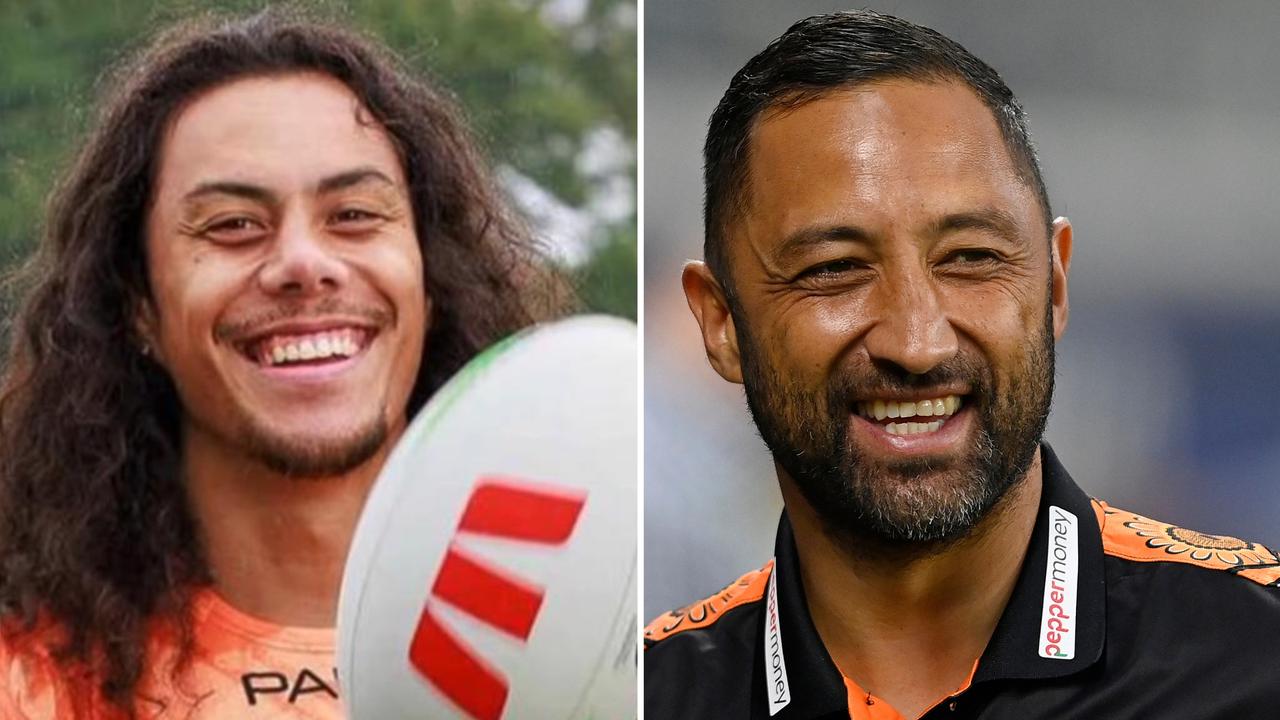The Storm vs Dragons clash illustrates how reducing the interchange can make the NRL a better game
THE NRL should bottle the Melbourne win against St George Illawarra. The game of the year showed where the game should be heading — by reducing the interchange, writes PAUL KENT.
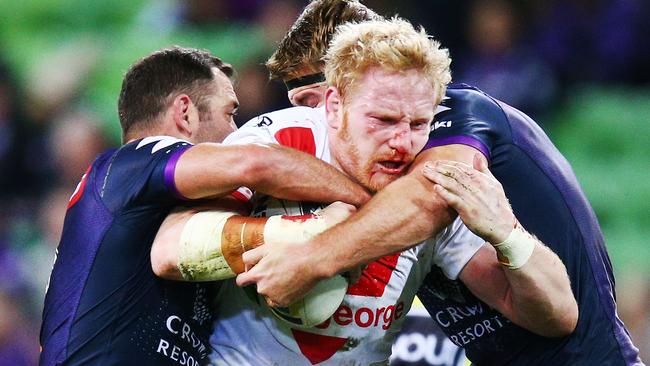
Opinion
Don't miss out on the headlines from Opinion. Followed categories will be added to My News.
THEY went try for try for 69 minutes and walked off with game-of-the-year honours.
The NRL should bottle the Melbourne win against St George Illawarra. It should be the template for what the game wants itself to be and where it is heading.
And the answer for how to get there, how to repeat the formula, is simple: reduce the interchange.
Already the great sin of this game, the misleading narrative, has begun to take root. Referees, it began.
FRESH START: Josh Morris quits Dogs for Sharks
SLATER: I’ve got no problem with Cam, Cooper
VIDEO: How Tariq Sims learnt to walk again
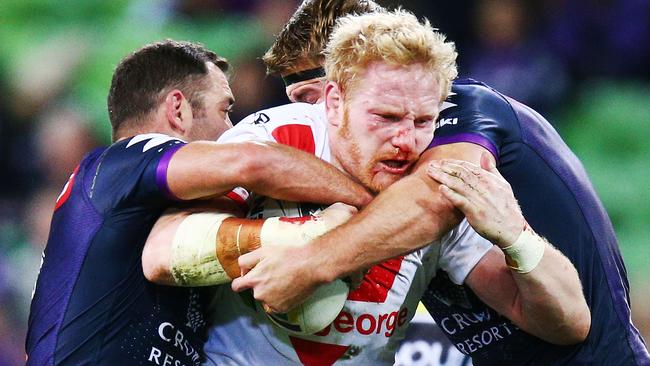
The quality of the game had only something to do with just eight penalties being blown. There have been plenty of games this year when eight or fewer have been whistled and they can’t register a blip on the memory.
What comes to memory from last Thursday was all the broken-field attack. It was Cameron Smith taking the ball at first receiver and shaping to pass inside and turning outside late, sending Nelson Asofa-Solomona through a gaping hole before he put Young Tonumaipea over in the corner.
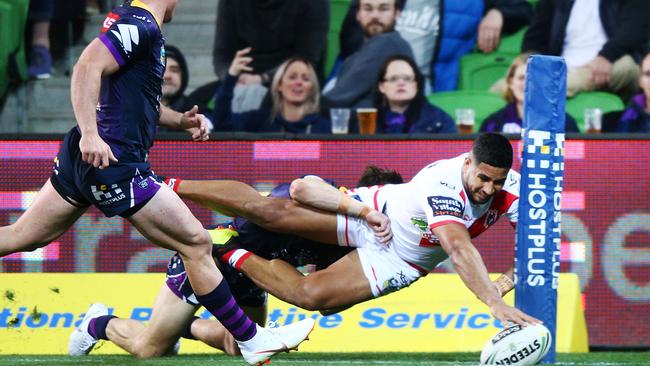
Gareth Widdop stripping the Storm short down his left edge and putting Nene Macdonald over in the corner.
Jahrome Hughes doing nothing more than hitting the line hard and beating four tired defenders on a diagonal run to the tryline.
Craig Bellamy said after the game he had nine players missing through injury or Origin selection.
Paul McGregor had four of his starting forwards missing — Paul Vaughan, Tyson Frizell, Jack De Belin and Tariq Sims. Ben Hunt, his halfback, was also getting ready to play Origin.
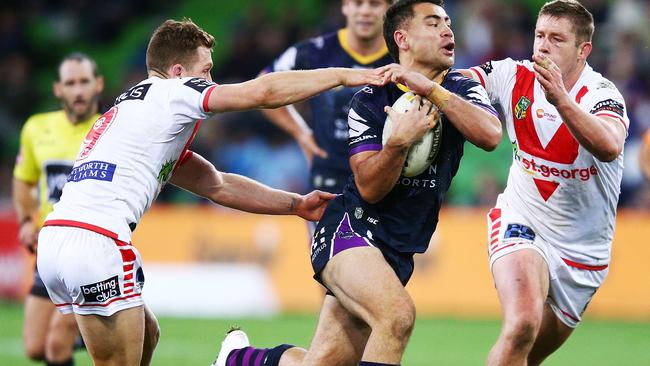
“I’m not going to use that as an excuse,” McGregor said. “They (those who came in as replacements) have been preparing and working for this opportunity for a long time.”
Bellamy was concerned at the 30 points his team conceded.
A week before with a full roster his team beat the Roosters 9-8. What happened is worth the NRL considering.
Without his Origin players, Bellamy had to call in Christian Welch (49 games), Joe Stimson (27), Brandon Smith (15), Patrick Kaufusi (one), Tue Kamikamica (three) and Justin Olam (one).
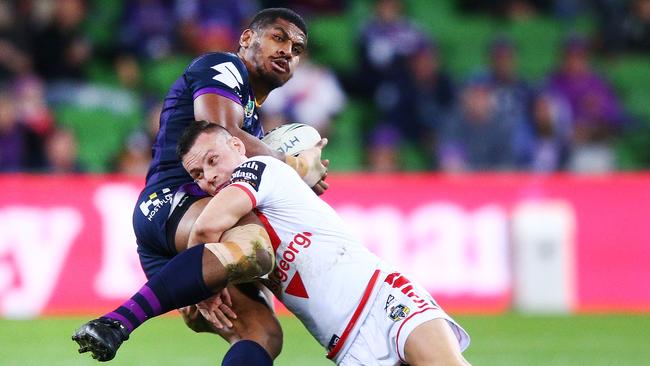
McGregor played Jacob Host (22 games), Luciano Leilua (10), Blake Lawrie (eight), Hame Sele (seven), Reece Robson (one) and 29-year-old debutant Darren Nicholls. They say it takes 50 games to know your way in the NRL.
So many changes meant it was only natural the defensive systems of both teams suffered. The structure was not what it should be. Different men defended in different positions. They could not wrestle as effectively.
And the result was line breaks and broken-field footy. All through simple missed tackles and misreads.
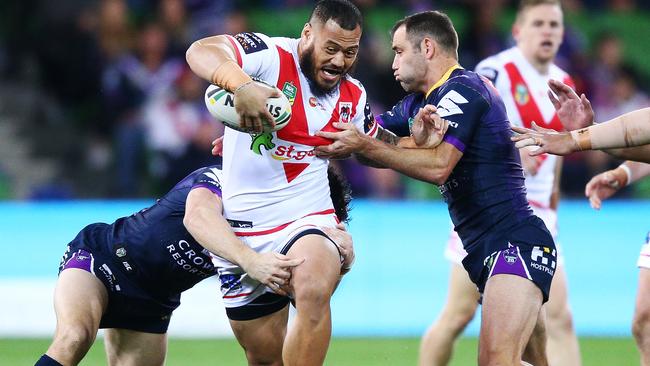
As the missed tackles piled up, the fatigue factored in and suddenly we had a game on our hands. The lack of penalties began to contribute.
Coaches can eventually educate the players about their systems. They can teach them to wrestle better. What they can’t protect against is fatigue.
It is the secret weapon that the NRL must now employ for the good of the game.
Coaches don’t want fatigue in the game. Fatigue means a tired defence and tired defenders make mistakes. They adjust slowly or misread a play because their concentration is gone.
The only way coaches can protect themselves against such simple errors is to maintain a fresh defensive line. The best way to keep them fresh is to rotate those doing most of the grunt work through the interchange.
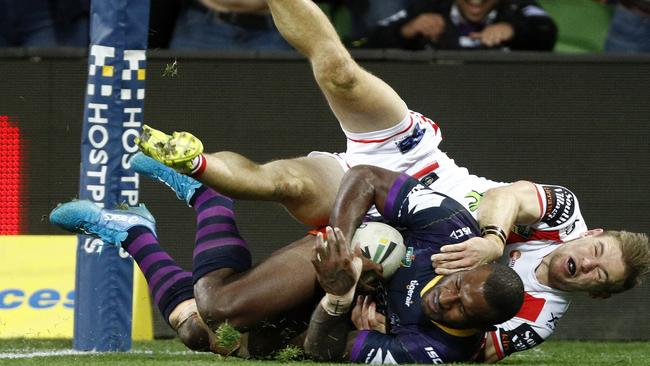
McGregor and Bellamy can’t acknowledge this, naturally. It is counter to what the fans want, like we saw on Thursday night.
So they found the misleading narrative, which was player welfare. They warned of the dangers of leaving tired players on the field.
The risk of having to — having to! — leave a concussed player on the field because they have run out of replacements.
Or the poor look of having to leave an injured player on the field. Again, having to! Even though they will not acknowledge leaving them on when it suits, such as hiding a playmaker with a busted shoulder in defence because he is still providing in attack.
For years the NRL supported this narrative, the coaches one step ahead.
The NRL has no evidence that fatigue leads to injury and, indeed, the rival AFL recently changed its rules to create more fatigue after collated evidence revealed the high-impact collisions from fresh players, and fresh players against tired players, caused more injuries than fatigue.
Aesthetically, the NRL went through a recent upsurge in attractive football when the interchange was dropped from 10 to eight.
Again, the coaches resisted the drop to six. They argued player welfare.
It sounds counter intuitive but the sooner the game moves to an interchange of six, and eventually four, the better.
Originally published as The Storm vs Dragons clash illustrates how reducing the interchange can make the NRL a better game

